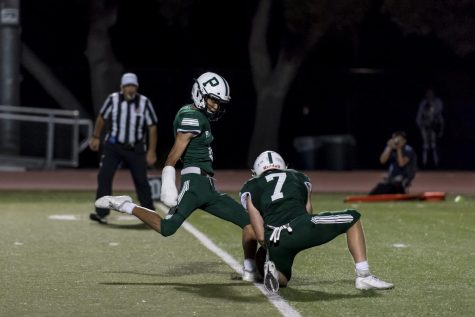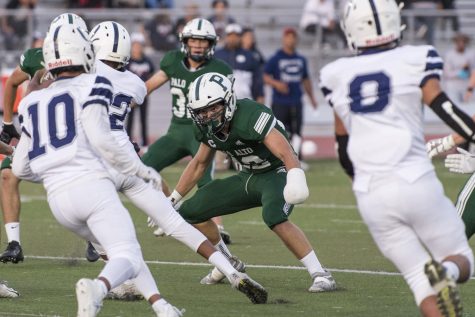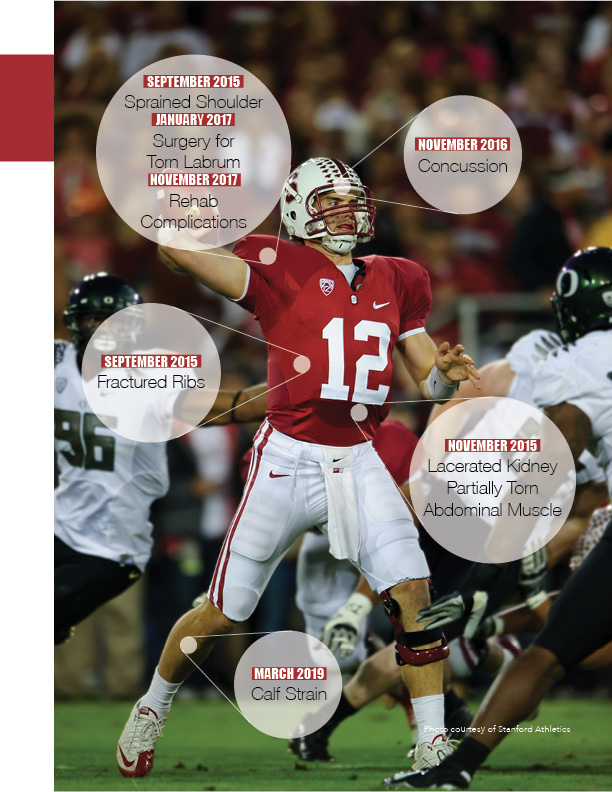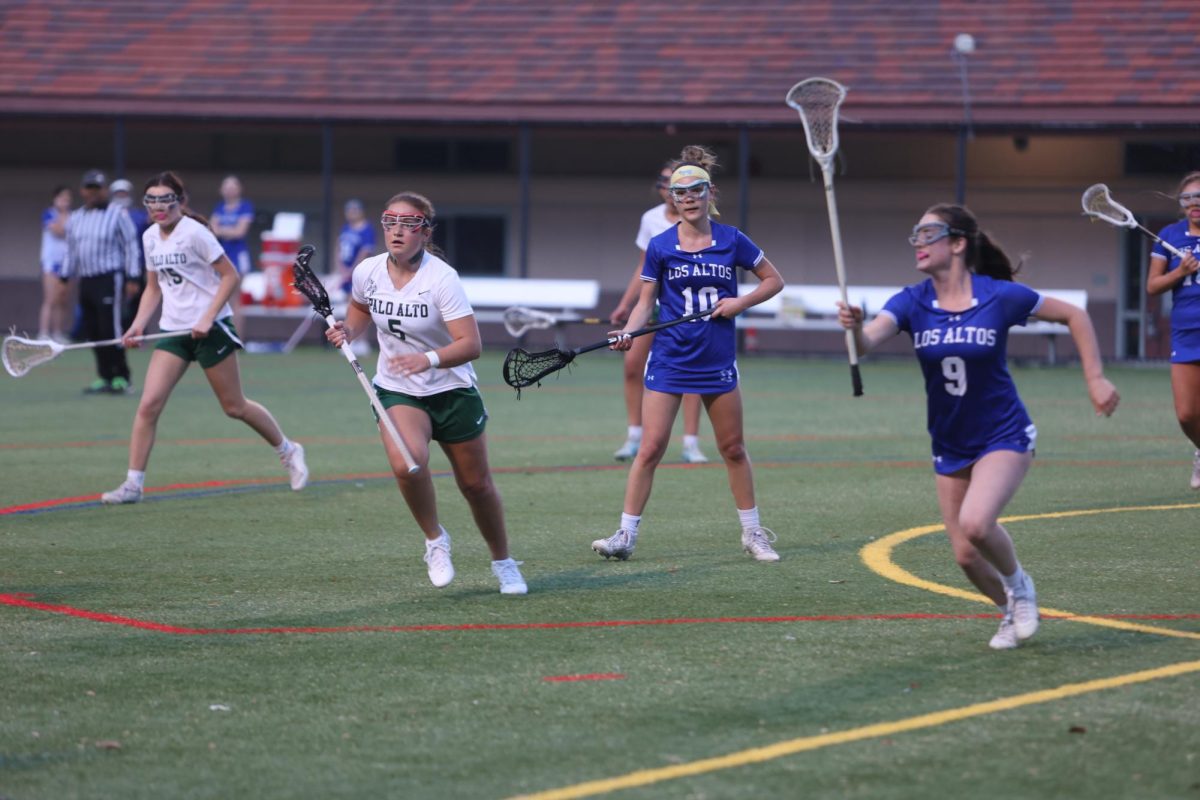Out of Luck
Andrew Luck’s recent retirement rocked professional sports to its core. It is practically unheard of for a player to willingly walk off the field in their prime, sacrificing success, fame, and fortune. This choice prompted a discussion in the athletic community over the cost of sports on the health of athletes and the culture around athletic injuries
September 30, 2019
A tired Andrew Luck walked off the field of Lucas Oil Stadium to loud jeers from his own fans, following the Indianapolis Colts preseason contest versus the Chicago Bears. Luck had not cost his team a bad loss with poor decision-making, no, he had cost his team much more: hope of a championship ring.
The shocking news was leaked by ESPN’s Adam Schefter during the fourth quarter, Luck would retire at age 29. Not only were Colts fans stunned, but the recent trend of injuries affecting the sports world was now under a brighter spotlight.
Drafted 1st overall in the 2012 NFL Draft, Colts fans and then General Manager were hopeful that they had selected a franchise quarterback to the team, someone who could carry the team to a Super Bowl win.
As Luck left the field at Lucas Oil Stadium for perhaps the last time, the fans saw their Super Bowl hopes squashed. Luck’s projected MVP-caliber season would never occur. The Colts plummeted from potential AFC champions to mediocrity. And the Colts faithful, who had been loyal to Luck throughout his seven brilliant seasons and several injuries, unleashed the bitterness they felt within themselves as their star spurned them and their dreams.
To some spectators, Luck’s decision was an act of selfishness, one which disregarded the organization, his teammates, and his coach for his own gain. Though his decision was made with his future health in mind, most sports fans are ignorant of the physical and mental impacts that professional sports and the toll of injuries have on the athletes that are put on pedestals.
Athletes aren’t seen as people in our society. They are seen as role models and heroes, or as awful. Fans see so much of these athletes, in games and in commercials, yet never stop to think about the sacrifices they make in their pursuit of excellence.
These attitudes surrounding athletes are one of the reasons Luck was booed for retiring, even after suffering extensive injuries and rehabilitation time. The fans saw the figure that they built up to mythical status come crashing down, and were devastated. They may have heard about the injuries, but they had no idea of the pain he went through.
We often view injuries in sports as unfortunate setbacks to a team’s development, a perspective which fails to consider the impact these injuries have on the individuals personal health, both physically and mentally, of athletes. We fail to recognize the pain athletes endure beneath the surface of competition and athletic achievement: the true cost of sports.
While injuries in sports take a toll on the bodies of athletes, their cost goes beyond the physical pain. Due to the high level of competition of sports, athletes often feel pressure to play through injuries and to never quit on their teammates. This pressure to get back on the field can worsen existing injury problems and contributes to the dehumanization of athletes.
As a result of pressure from fans, as well as a desire to not let down their team, many professional athletes downplay the severity of their injuries to compete. Warriors starter Klay Thompson displayed this when he was injured during Game 6 of the 2019 NBA Finals.
After tearing his ACL, Thompson insisted on staying in the game long enough to shoot two successful free throws before going to the locker room to get checked out by the team doctor where they determined the severity of his injury. It was only then that he acknowledged the extent of the harm that had been caused to his body. If Thompson had been truthful the severity of his injury, he would have been ruled out of the game and would have not returned.
“Once I went back [into the locker room] and didn’t feel the energy of the crowd, or see my teammates, or feel that ball in my hands, the adrenaline wears off and just realized that I did something pretty significant,” Thompson said in a post-game interview.
Warriors fans were devastated after the injury, as the team was left scrambling as hopes for a three-peat in NBA Championships slipped through their hands, but the fans concerns were not specific to Thompson’s health, only with the fading hope of their team winning it all.
Thompson’s decision to stay in the game was personally motivated, for his own competitive nature compelled him to return to the game. If he did not stay in the game for the free throws, per NBA rule, he would not have been admitted back into the game, no matter what. However, for some athletes, they feel pressure to play not just from themselves, but from coaches, fans, and players.
In sports, there is an attitude that coaches use to keep players on the field when their physical condition may be compromised. Whenever injury concerns arise, they pose the question: “Are you hurt or injured?”
To the average person, the distinction between these two terms seem to be minute, people involved in sports interpret them as completely different. “Hurt” means general physical pain, that may arise after a player gets hit in football or after a tough slide tackle in soccer. “Injured” means a diagnosed medical condition that cannot simply be “shaken off”, like a torn muscle or ligament.
Often times players who are in significant physical pain feel pressure to play because their pain won’t result in rehabilitation time necessary to recuperate from a specific injury. Everyone tells them to just walk it off, that they’ll be fine, with no regard for the long-term health of players or the pain they’re really going through.
The reluctance of athletes to speak out about their injury due to the pressure to play they feel ties directly to the role of the health professionals that care for these injured players. Team doctors are often faced with a conflict of interest, finding it difficult to balancing two vital and often conflicting aspects of their job.
On one hand, their compensation and whether or not they have a job is tied to the success of the team, having star players in action is the most beneficial thing for a team. On the other hand, trainers have a responsibility to players to address their individual injuries and needs, to only clear them when they are healthy.
This begs the question; do medical staff in sports represent the team or franchise that pays them or the health of players? When the two are at odds, who suffers?
Paly’s own trainer Justine Iongi, known by the school community as Mrs. E, says that people have gone so far as to offer to waive liability if the player re-injures themself because of being cleared early.
“I just hold fast to our philosophy,” Mrs. E says. “We want to make sure that they’re safely playing. That they’re able to play in their sport without injuring themselves further, and to play to their potential.”
Injuries of any kind not only affect the player’s mental and physical health, but they cause chaos financially. Teams rely on a successful lineup with strong players to bring in profit and fan support, and athletes rely on their ability to play to make a living. Injuries put this all in peril.
Sports has become a profit-driven industry, mainly due to the massive contracts and ad revenue that come with TV network deals, which has not only affecting the way owners and coaches behave, but also the mentality of players.
During contract years, players often feel immense pressure to perform to the best of their ability, even if they are injured. And many collegiate football players will sit out bowl games in order to mitigate the risk of suffering an injury that could cost them money come draft day.
During the 2016 Fiesta Bowl, a Notre Dame player went down after being pushed by an Ohio State offensive lineman, appearing to hyperextend his knee. As the realization set in that the player who went down was Jaylon Smith, junior linebacker and projected top five pick in the NFL draft, a gasp was heard from the thousands of fans in the stadium as they realized that the injury would cost this young man millions.
According to a 2016 International Business Times, the fifth overall pick, the worst projection for Jaylon Smith pre-injury, would have received a contract worth 23.96 million dollars. After Jaylon Smith tore both his ACL and MCL, suffering nerve damage as well, he was selected in the second round of the 2016 NFL draft, with the 34th overall pick, signing a contract worth 6.49 million dollars. This unfortunate injury cost Jaylon Smith at least 17.47 million dollars, more than many make in their entire lives.
Other players have taken note of Smith’s meteoric fall in the draft and his subsequent loss of money due to injury. Projected first round picks in the NFL draft have started to take preemptive action to prevent injuries that could hurt their draft stock. In 2017, the year after Smith’s injury, projected first round running backs Leonard Fournette and Christian McCaffrey, from LSU and Stanford University respectively, decided to sit out their bowl games to protect their futures.
Many members of the national media ripped into them for supposedly quitting on their teams, but the results speak for themselves: Leonard Fournette was taken with the 4th overall pick, earning 27 million, while Christian McCaffrey was taken at the 7th overall pick, earning 17.2 million dollars. In the years following, more and more players have started sitting out bowl games and declaring early for the NFL draft, trying to secure their financial future.
Players across all sports have realized the risks that they are taking, and have begun to ask for more guaranteed money, meaning that they would still get paid even if they succumb to injury. Notably, Antonio Brown and Le’veon Bell left the Pittsburgh Steelers because they wanted more guaranteed money in their contracts.
And although there are a lot of injuries in football, other sports are not immune from the costs of injuries. Micheal Porter Jr. was the projected number 1 overall pick in the NBA draft, but tore his ACL while at Missouri. He then went on to be selected with the 14th overall pick, a sequence of events potentially costing him more than 11.5 million dollars.
Injuries don’t only affect the monetary compensation of contracts. Some injured players do not even receive contracts. Also, coaches and teams lose money when their star players get injured. Coaches may be fired if they lose too many games, and an injury to a star player can certainly trigger a losing streak for a team. Also, teams lose out on countless millions when a star player’s injury leads to a decline in jersey and merchandise, not even counting the losses in bonuses teams get when they win playoff games.
As injuries become more prevalent across the money-driven industry of sports, the push for guaranteed money is one of the primary factors determining where, or even if, athletes are playing.
Central to such a profitable industry, trainers often face pressure to clear players before they are fully recovered from the coaches, fans, and even the players themselves.
“In all the settings I’ve worked there’s always been pressure because [the teams] need numbers, it’s a star player, or whatever, but it just comes down to high school” Mrs. E said. “I try to err on the side of conservative.”

Alex Wang (’20) kicks the ball with an injured arm.
Similar to pro athletes, high school athletes face significant pressure to play through pain from teammates, coaches, and even themselves. Paly alum David Hickey (‘19) understands the physical and emotional toll a potential season ending injury has.
In the 2018 Paly football season, Hickey suffered a partially torn labrum, a tendon in the shoulder, during a practice and later re-injured it in a game against Aragon High School.
Having a history of injuries, his teammates thought he was over-exaggerating his shoulder injury to skip conditioning, said Hickey. Some of his coaches were even less helpful and told him it wasn’t as bad as he thought.
Trying to heal his shoulder to the point where he could continue to play, Hickey’s days consisted of stretching, ice, heat, and visits to the Paly trainers. Although not fully healed, Hickey continued to play for the rest of the season, risking more damage in his shoulder.
Alongside the disappointment and frustration of working so hard, Hickey felt much more limited in his playing because of mental obstacles he had to face.
“It would slow you down because if you’re perfectly healthy you’re not worried about injuries and going 100%, but if you’re injured you take every pain or tweak as a mean of being serious,” Hickey said. “You would slow down and wouldn’t play as well. Instead of focusing on the game, you’re focusing on your injury.”
In order to stay game-eligible, Hickey opted out of surgery to repair the tendon, meaning that his shoulder will always be torn without any hope of full recovery.
Hickey’s rehabilitation consisted mainly of stretching exercises for his shoulder. During and after the season, he spent his preps in the training room, working his shoulder. Once the season ended and the pressure from his coaches and teammates disappeared, Hickey said he had trouble finding the motivation to keep stretching.
This is a sensation that many athletes can relate to after having suffered a major injury. Georgia Luehrs (‘20), who tore her ACL in October of 2018, said that the support of her team is what motivated her to start training again.
“If I didn’t have my team, I probably wouldn’t have gone back to playing soccer,” Luehrs said.
Finishing up her final month of her forecasted recovery schedule, Luehrs is back to playing, but she worries that with the year off of soccer she might never regain her original skills, both physical and mental.
Physically, she believes she can slowly build her skills up again but is confident that it will take a significant amount of time before she feels comfortable tackling and being physically aggressive. Luehrs also describes that a year without playing soccer was difficult for her mental health because she felt excluded due to her inability to play soccer, the sport she shares with her closest friends.
Although she was anxious to get back on the field, Luehrs recognizes the time to heal and take a break from physical activity is important.
Her advice for athletes in a similar position is to “Not to rush it,” Luehrs said. “If you ever have a serious injury, try to take a step back and find other things that you enjoy that don’t include running going around and crashing into people.”

Will Moragne (’20) plays defense with an injured arm.
Hickey agrees with Luehrs.
“People are going to pressure you to keep playing and it’s hard because you’ll want to keep playing,” Hickey said. “But you’ll have to realize that if you get a minor injury and don’t get treatment it could turn into a major injury that could end your season or career.”
For those who don’t take this advice and continue to play through major injuries may need to stop and ask themselves “What will this cost me in the future?”.
HIDDEN INJURIES
Major players getting sidelined for ACL tears, broken limbs, and concussions get headlines. Their pain gets attention. However, players go through more than just physical pain behind the scenes. Other athletes are suffering on the sidelines from invisible pain that they have been taught to hide because they want to avoid appearing weak. Recently, superstars are bringing the conversation of mental health to light in professional sports by breaking down the stigma surrounding it by reaching out for help.
Clint Malarchuk
After suffering one of the most gruesome injuries in the history of professional hockey during a 1989 NHL game, Clint Malarchuk was applauded for his resilience. He became known for his toughness, strength, and determination. Just ten days after an opponent’s hockey skate slit his carotid artery, Malarchuk returned to the ice to play with his team.
What fans didn’t see was the anxiety, depression, and paranoia that plagued his mental health for years following the injury behind the scenes. In a reflection he wrote for The Players’ Tribune, Malarchuk said that even if it had been an option for him, he would have refused counseling out of fear of showing weakness to the thousands that celebrated his bravery.
As his mental health deteriorated, he turned to alcohol and painkillers. He overdosed, leading to his diagnosis of OCD, depression, and anxiety. Malarchuk recalls the diagnoses as having lifted a weight off his chest.
Years after his own injury, Malarchuk was forced to relive his trauma watching another player live his worst nightmare by sustaining the same injury. The pain drove him to the extreme. He put a gun to his head and tried to commit suicide.
This final, desperate attempt for help led to him being diagnosed with post traumatic stress disorder, giving him a path to learn to manage his pain. With his newfound strength, he now tours the country speaking on mental health.
Brandon Marshall
Brandon Marshall’s legacy does not lie in his NFL career but in his record as a mental health activist.
His life up until 2011 was plagued by poor decisions that landed him in trouble, legally and professionally. In 2008, he got a three-game suspension after being arrested on several charges.
He recalls spending the 2009 season locked in his home, too depressed to go out, blaming his mental state on poor relations with his coach and job instability.
This was not the root of his problem. In 2011, he was diagnosed with borderline personality disorder, characterized by difficulty coping with and controlling emotions.
He decided to use his platform to bring awareness to the stigma surrounding mental health, creating a foundation called Project 375.
Kevin Love
When you think of Kevin Love, you probably think of athletic success. You probably think of a 5-time NBA All-Star who was instrumental in LeBron James and the Cleveland Cavaliers’ historic comeback victory in the 2016 NBA Finals.
In 2018, Love announced that he experienced a severe panic attack. His vast history of success made his recent announcement that he struggled with mental health problems all the more staggering.
This unprecedented announcement wasn’t overlooked by other players or the media. In competitive sports, talking about mental health can be seen as weak, as this is a heavily stigmatized topic.
Not only did Love speak out, but he sought help. Asking for help is a universal sign of vulnerability, and may detract from the positive images we commonly associated with him.
In spite of this, Love put his mental health in front of his image and addressed his problem head on.
Love’s 2018 The Players’ Tribune article “Everyone is Going Through Something” sheds light on the mental issues he struggled with, despite being a successful professional athlete, and gives insight into the personal issues athletes feel off the field and away from the cameras and fans.












